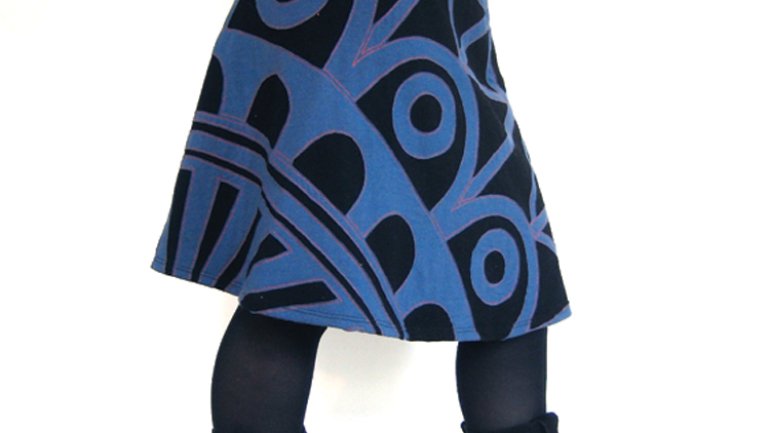Form Follows Figure
Form Follows Figure
“My canvas is the shape of the body,” says Rachel Sherman. Malagueta, her inspired, one-of a-kind clothing line, radiates something most art-to-wear lacks: body consciousness. Appliqué, embroidery, and topstitching are used to direct attention to the body as much as to decorate the fabric. Sherman deftly employs techniques such as ruching, shirring, and varying thread tension, along with the inherent properties of stretch fabric, to shape the garments. The result is pattern-rich and sculptural, yet eminently wearable.
The name Malagueta, a kind of hot pepper popular in Brazil, is a nod to the Philadelphia artist’s heritage. Born in Bucks County, Pennsylvania, in 1977, Sherman has a Brazilian mother who comes from a family of makers. Sherman’s father, the first U.S.-born generation of a Russian-Jewish family, is a graphic artist who worked for 30 years for the U.S. Navy, drawing everything from the technical designs for boats to pamphlets and portraits. “He was the one who was really into teaching me about what beauty was. My dad and I are very close.”
When she was 13, her parents divorced. “After that, I was a bad kid. I was just acting out. I wasn’t an academic,” she says. “Art classes saved me.”
Her ninth-grade art teacher had her make a leather pouch and taught her to embroider it; something about the process resonated with her. Although she didn’t sew much, her mother had an in-table Singer sewing machine and some fabric, and it wasn’t long before Sherman was sewing and embroidering envelope purses, which she sold after classes for $8 to $12.“That first selling experience was really satisfying,” she recalls. “I always liked working for myself.”
Off-the-rack clothing never seemed to fit her curvy figure, so she learned to alter everything she bought. She also began remaking garments into new shapes and delving into surface design; in her first foray, she painted a vine snaking up from the bottom of her jeans and wrapping itself around the seat, before climbing down the other leg.
Noticing Sherman’s intense interest in fabric, her mother’s neighbor advised her to go to Moore College of Art and Design; Sherman brought a bag of her work to Moore as a portfolio and was accepted. As she pursued textile design, everything began to click. “I made love to my homework. I was nurtured. People got me. My professors got me.”
In her senior year she won a fellowship to study in Morocco, Portugal, and Spain, where she was inspired by the rich heritage of hand embroidery, in addition to the wealth of tile and geometric design. She also discovered she could design garments by draping dress forms, although she now uses patterns to create her silhouettes. Her senior thesis focused on the effects that can be achieved with minimal equipment – just a sewing machine, needle, thread, yarn, and layering fabric.
She graduated in 1999 and was awarded an extra year of school tuition-free for her excellent performance. During that year she developed the caterpillar appliqué and other nature-inspired motifs she uses today. When designer Todd Oldham visited the school, he was so taken with her work that he wanted to market it in Japan. While the deal eventually fell through, she says, his interest in her work “made my life!”
Riding that wave of confidence, Sherman found immediate success, selling her work through several West Coast boutiques from 2002 to 2008. She has been selling her Malagueta line full time since 2008, at shows such as Art Star Craft Bazaar, ACC Baltimore, Urban Craft Uprising in Seattle, and the Smithsonian Craft Show. With ingenious fit, extraordinary texture, and joyous color, each piece is art that celebrates the human form.
Rachel Schalet Crabb is a writer and fiber artist in Minneapolis.




